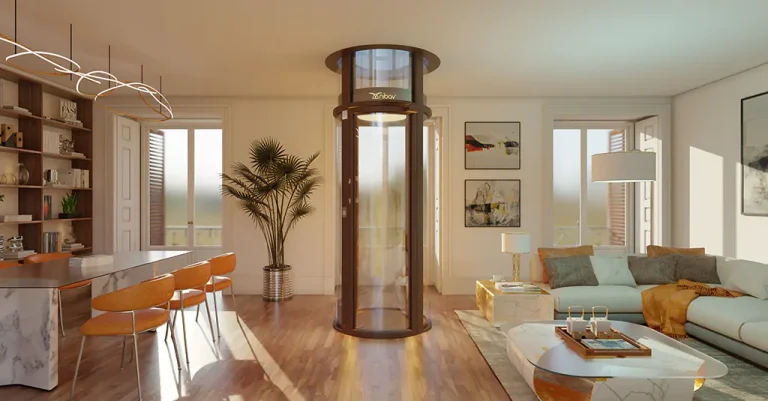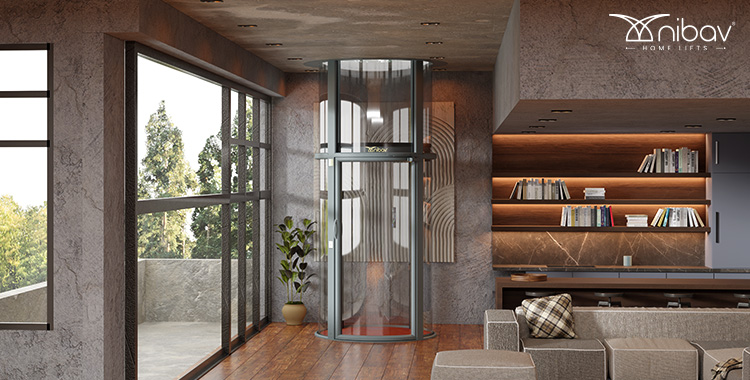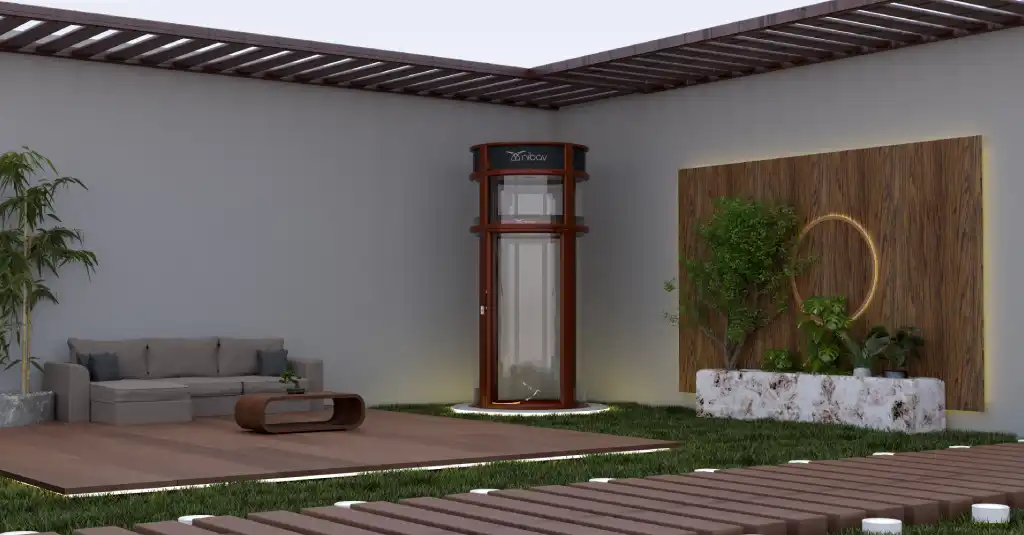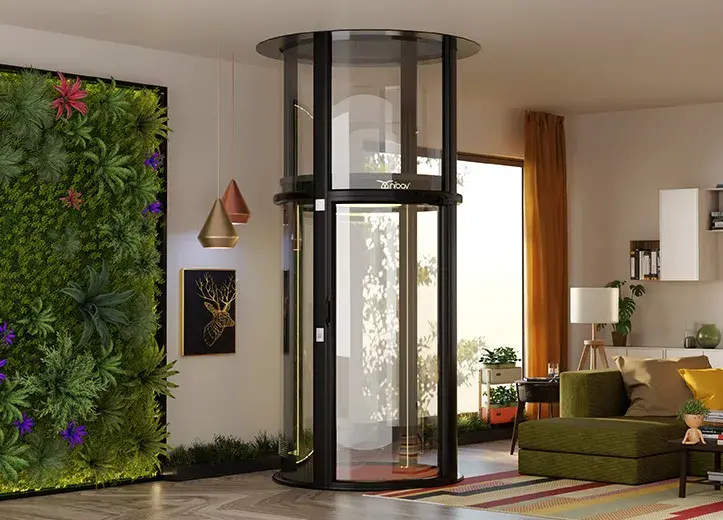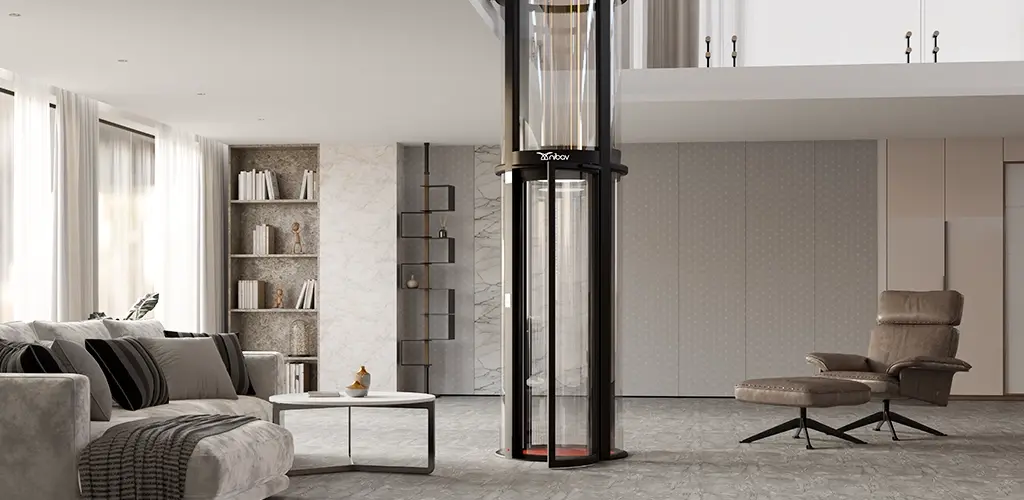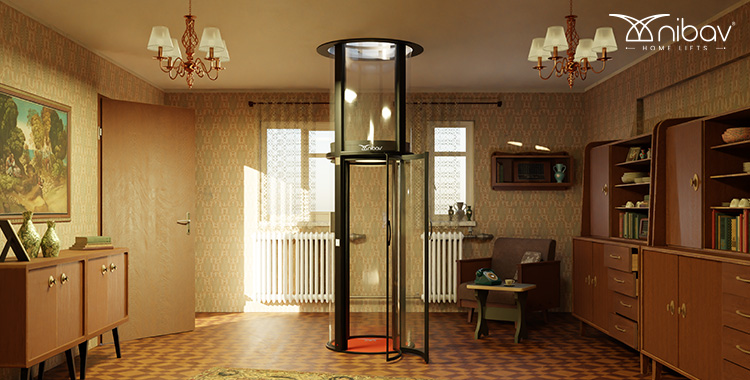
Table of Contents
- Why Space-Saving Home Elevators Are Trending
- Top Space-Saving Home Elevator Designs for Small Homes
- 3. Space Requirements for Modern Compact Elevators
- 4. How to Choose the Right Space-Saving Elevator for Your Home
- 5. Benefits of Space-Saving Home Elevators in Small Homes
- 6. Installation Ideas for Small Homes and Duplexes
- 7. Safety Features in Space-Saving Home Elevators
- Conclusion
- Frequently Asked Questions
As modern homes become more compact and urban living continues to grow, homeowners are increasingly seeking smart ways to enhance comfort, accessibility, and convenience—without compromising space. One of the most innovative solutions gaining popularity is the space-saving home elevator, designed specifically for small homes, duplexes, and compact multi-level residences. Gone are the days when home elevators required large shafts, deep pits, or bulky machine rooms. Today’s compact lift systems are sleek, efficient, stylish, and engineered to fit into tight spaces with minimal civil modifications. Whether you’re upgrading your existing home or building a new one, space-efficient home elevators can significantly improve mobility while adding long-term property value. This article explores the best space-saving home elevator designs, their benefits, installation requirements, and how they transform modern small homes and duplexes.
Why Space-Saving Home Elevators Are Trending
Small homes and duplexes often have limited floor area, making traditional lifts impractical. As families grow or aging parents move in, the need for easy multi-level access becomes essential. Space-saving home elevators offer several advantages:
- Require minimal space—some models fit within just 1 square meter
- No pit or overhead required
- No machine room needed
- Quick installation (sometimes within 24–48 hours)
- Energy efficient and low maintenance
- Wheelchair-friendly options available
- Enhance home resale value
These features make them ideal for compact urban homes, bungalows, townhouses, and duplexes.
Top Space-Saving Home Elevator Designs for Small Homes
1. Vacuum (Pneumatic) Home Elevators
One of the most revolutionary space-saving designs, vacuum elevators operate using air pressure technology. They are cylindrical, transparent, and extremely compact.
Key features:
- Self-supporting structure—no shaft needed
- Installation can be done on any flat surface
- Fits even in the corner of a room
- Minimal power consumption
- Sleek glass design enhances interiors
- Suitable for 1–3 persons depending on model
Vacuum elevators can be installed without major construction changes, making them perfect for small duplexes with limited space.
2. Machine-Room-Less (MRL) Elevators
MRL elevators eliminate the need for a bulky machine room, reducing space usage dramatically. All the machinery is integrated within the shaft.
Why it’s ideal:
- Requires only a small shaft footprint
- Energy-efficient traction system
- Smooth and quiet operation
- Works for 2–4 storey homes
- Suitable for both new constructions and retrofits
MRL elevators strike the perfect balance between performance and compact design.
3. Shaftless Home Elevators
Shaftless elevators are simple two-stop lifts that do not require an elevator shaft. They move between two floors through a cut-out in the ceiling.
Advantages:
- Incredibly compact
- Very low installation cost
- Perfect for homes with minimal free space
- Quick installation—often within 1 day
- Ideal for elderly or wheelchair users (depending on model)
These lifts are popular in small homes where space is extremely limited but accessibility is a priority.
4. Compact Hydraulic Elevators
Hydraulic elevators have evolved with modern space-saving technology. Compact hydraulic models now require:
- No machine room
- Very small pit
- Minimal power usage
Their smooth movement and high load capacity make them ideal for homes with elderly family members or mobility needs.
5. Corner-Fit Glass Elevators
These elevators are designed to fit snugly into corners, taking up unused space. Their panoramic glass design adds elegance while saving space.
Features:
- Stylish look
- Minimal footprint
- Transparent cabin enhances interior openness
- Works well in stairwells or living room corners
Corner-fit elevators are widely chosen for duplexes with compact staircases.
3. Space Requirements for Modern Compact Elevators
One of the biggest benefits of modern home elevators is their low space requirement. Here’s what typical space-saving models need:
- Vacuum Elevators: 1–1.4 sq. m
- MRL Elevators: 1–1.5 sq. m shaft
- Shaftless Elevators: 1 sq. m
- Compact Hydraulic Elevators: 1.2–1.8 sq. m
Even in small homes with limited floor area, these elevators can be installed without major modifications.
4. How to Choose the Right Space-Saving Elevator for Your Home
Choosing the right elevator depends on several factors:
1. Available Space
Measure the area available for installation:
- Corners
- Near staircases
- Between walls
- Free space in living rooms or hallways
Vacuum or shaftless lifts are ideal for extremely small spaces.
2. Number of Floors
- 2 floors → Shaftless elevators or small vacuum models
- 3+ floors → MRL or pneumatic elevators
3. Load Capacity Needed
Consider:
- Passengers
- Groceries
- Wheelchairs or walkers
- Daily household use
Choose a model with a capacity that suits your lifestyle.
4. Home Interior Design
Glass elevators enhance aesthetics and feel lighter visually in compact spaces. Enclosed cabins or corner-fit lifts can blend seamlessly into interiors.
5. Budget
Space-saving elevators vary in price depending on:
- Size
- Type (vacuum, hydraulic, MRL)
- Customisation
- Safety features
Stairlifts are cheaper but not ideal for long-term accessibility, especially in small duplexes.
5. Benefits of Space-Saving Home Elevators in Small Homes
1. Maximises Usable Floor Space
Compact elevators make vertical movement easy while preserving living space.
2. Enhances Home Aesthetics
Modern glass or panoramic designs add luxury without taking up visual space.
3. Increases Home Value
A home with an elevator—especially a stylish compact one—commands higher resale value.
4. Provides Mobility Independence
Elderly users, people with disabilities, and families with children can move freely and safely.
5. Minimal Noise and Vibration
Latest models operate quietly, ensuring comfort and peace.
6. Energy-Efficient Operation
Vacuum and MRL elevators consume less energy compared to traditional lifts.
7. Low Maintenance
Modern compact elevators require minimal servicing, making them ideal for busy families.
6. Installation Ideas for Small Homes and Duplexes
If you’re wondering where to place an elevator in a small home, here are smart placement ideas:
1. Staircase Void Installation
Place the elevator within the empty space of a spiral or straight staircase.
2. Corner Installation
A popular choice that uses unused corner area efficiently.
3. External Balcony-to-Ground Installation
A glass elevator attached externally is perfect for extremely compact homes.
4. Living Room Installation
Panoramic lifts look elegant and do not feel bulky.
5. Cupboard-to-Cupboard Model
Uses closet space between two floors—ideal for shaftless elevators.
7. Safety Features in Space-Saving Home Elevators
Modern compact elevators come with advanced safety mechanisms such as:
- Emergency battery backup
- Auto-descent
- Door interlock system
- Child safety lock
- Overload sensors
- Anti-trap technology
- Multiple braking systems
These ensure risk-free vertical movement even in small homes.
Conclusion
Space-saving home elevator designs are transforming the way small homes and duplexes approach accessibility, convenience, and luxury. With advanced technology, compact architecture, and minimal installation requirements, home elevators are no longer reserved for large houses alone. Whether you choose a sleek vacuum elevator, a practical MRL model, or a stylish corner-fit glass design, modern compact lifts make everyday movement easy, safe, and comfortable—while elevating your home’s value and appeal. If you want long-term convenience and future-ready accessibility, a space-saving home elevator is one of the best investments you can make for your small home or duplex.
Frequently Asked Questions
1. What is the best home elevator for small spaces?
Vacuum elevators and shaftless home elevators are ideal for small spaces because they require minimal area, no pit, and very few structural changes.
2. How much space does a compact home elevator need?
Most space-saving home elevators need only 1–1.5 square meters, making them perfect for small homes, duplexes, and urban residences.
3. Can you install a home elevator in an existing small house?
Yes. Modern compact elevators—like pneumatic or MRL models—can be retrofitted into existing homes with minimal civil work.
4. Are space-saving elevators safe for elderly people?
Yes. They come with safety sensors, battery backup, emergency lowering, door interlocks, and anti-trap features for secure use.
5. Do home elevators increase the value of small homes?
Absolutely. A compact home elevator adds luxury, accessibility, and future-readiness, making small homes more attractive to buyers.

